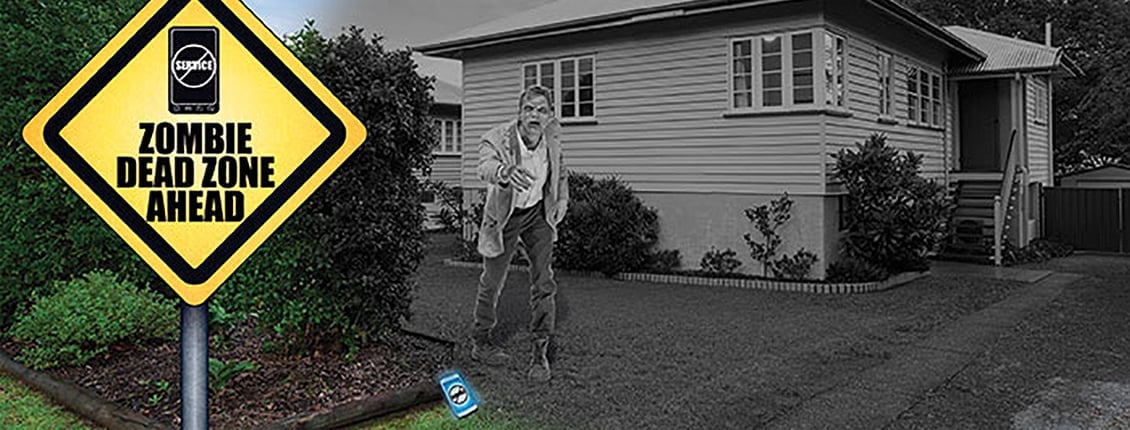
Boosting Profits With Cellular Signal Boosters
…Zombies are encircling a home, eating cell signals or turning healthy ones into ones barely alive. The embattled family inside hovers at their windows, shaking their cell phones in frustration…. It’s not a movie plot. But it is a depiction of how many cell phone users feel.
“A strong consumer appetite for mobile connected devices is causing some very interesting changes in the CE ownership landscape,” said Steve Koenig, senior director, market research at CEA. “These mobile devices have greatly influenced the type of content Americans consume, and given birth to new emerging tech categories such as wearable activity trackers and smart home devices that consumers are beginning to embrace more broadly.”
At least 90% of American adults own a cellphone, while 72%, own a smartphone. 90% of US households use wireless service and 44% of US adults live in a household with a cell phone but no landline phone. A recent Consumer Electronics Association study shows that smartphones are the third-most owned consumer electronics product in the U.S., trailing only TVs and DVD/Blu-ray players.
Our reliance on dependable cellular service is obviously growing. That makes the frustration of dropped calls and weak cell reception even more exasperating. On top of that, the burgeoning industrial machine-to-machine (M2M) and IoT (Internet of Things) markets depend on reliable cellular connections.
In-Store Education
Signal booster products fall into three categories: on the road, in-building and M2M. So create a big eye-catching, color-coded chart that clearly states the problem areas and recommended product solutions. Don’t forget to have columns for basic additional info, like 3G or 4G, a number of users, area coverage, best for weak outdoor signals, etc. Then label and color-code the shelves to match.
Be sure to include a bold disclaimer that boosters improve an existing signal; they won’t work if there’s no signal at all. A signal strength reader like the zBoost YX699 or the Wilson Electronics 867501 should be available for sale right by the display.
weBoost/zBoost family of products
Without a doubt, Wilson Electronics has been a significant leader in the cellular booster industry for over 20 years. Last year, they bought competitor zBoost. This year, Wilson launched weBoost as their new face and brand. The goal is to create a dual-brand/better-best strategy, with weBoost as the premium name and zBoost the value line.
weBoost is currently transforming Wilson-branded products into more marketable, logically named counterparts. The result: weBoost has four lines—Drive, Home, Connect and Signal. Signal, by the way, is for the M2M market.
Currently, zBoost divides their products into travel and home, and then subdivides them into urban/suburban and suburban/rural locations because each SKU has suggested square footage coverage. They also note if an item is recommended for weak outdoor signal areas. zBoost has a M2M division as well that focuses on custom solutions.
There are five marketing names for zBoost signal boosters: Mobile1, CONNECT, SOHO, REACH and TRIO. Names may be combined with each other, depending on usage.
Generating Store Traffic
Okay, your chart is made and the store is ready to go—now its time to bring people in. Here are some ideas, ranging from mild to wild to start the brainstorming. Don’t hesitate to use social media and send out press releases.
Store event
Hold a two-day signal booster event. Run ads and put big banners outside your store. Promote a costume contest for the best zombie/vampire contest—after all, it’s all about cellular dead zones!
Taking it a step further, get some employees and their kids out in the parking lot made up as zombies and vampires during peak drive time a week before the event. Post a big sign by them that reads: Slay the dead zones! Get a signal booster!
Map the frustration
Print out a big map of your area and label it Cellular Dead Zone Map. Put both in the parking lot or head out to the mall and encourage people to mark on the map where they have problems with cell reception. Promote your event at the same time.
Go direct
A simple online search for cellular dead zones will turn up consumer-generated coverage maps for your area. Between it and your own map people marked, launch a direct mail campaign to key zip code areas.
Or better yet, go to areas with poor signal strength. Take a big sign about your upcoming open house event as well as your zombies and hero and stage a publicity stunt. Have some signal readers on hand for sale. If it’s a problem taking this on the road, do it in your parking lot. You should first check with local authorities to see if some kind of permit is required. Notify them regardless. That way any 911 calls won’t create consternation. And don’t stage it in a way that creates accidents!
By educating the public, you’ll turn unhappy and frustrated cellular consumers into smiling and happy signal booster customers! Talk with your sales rep today about incorporating signal boosters into your business, or click here to see all of our signal booster options.
